The Mediterranean storm named Daniel dumped torrential rain on the Libyan coast, setting off flooding that's believed to have killed over 10,000 people. Riverside buildings in the eastern Mediterranean coastal city of Derna collapsed and the rainfall broke river dams and engulfed entire neighborhoods.
The combination of extreme weather, vulnerable geography and weak infrastructure resulted in devastating effect in the flooding.
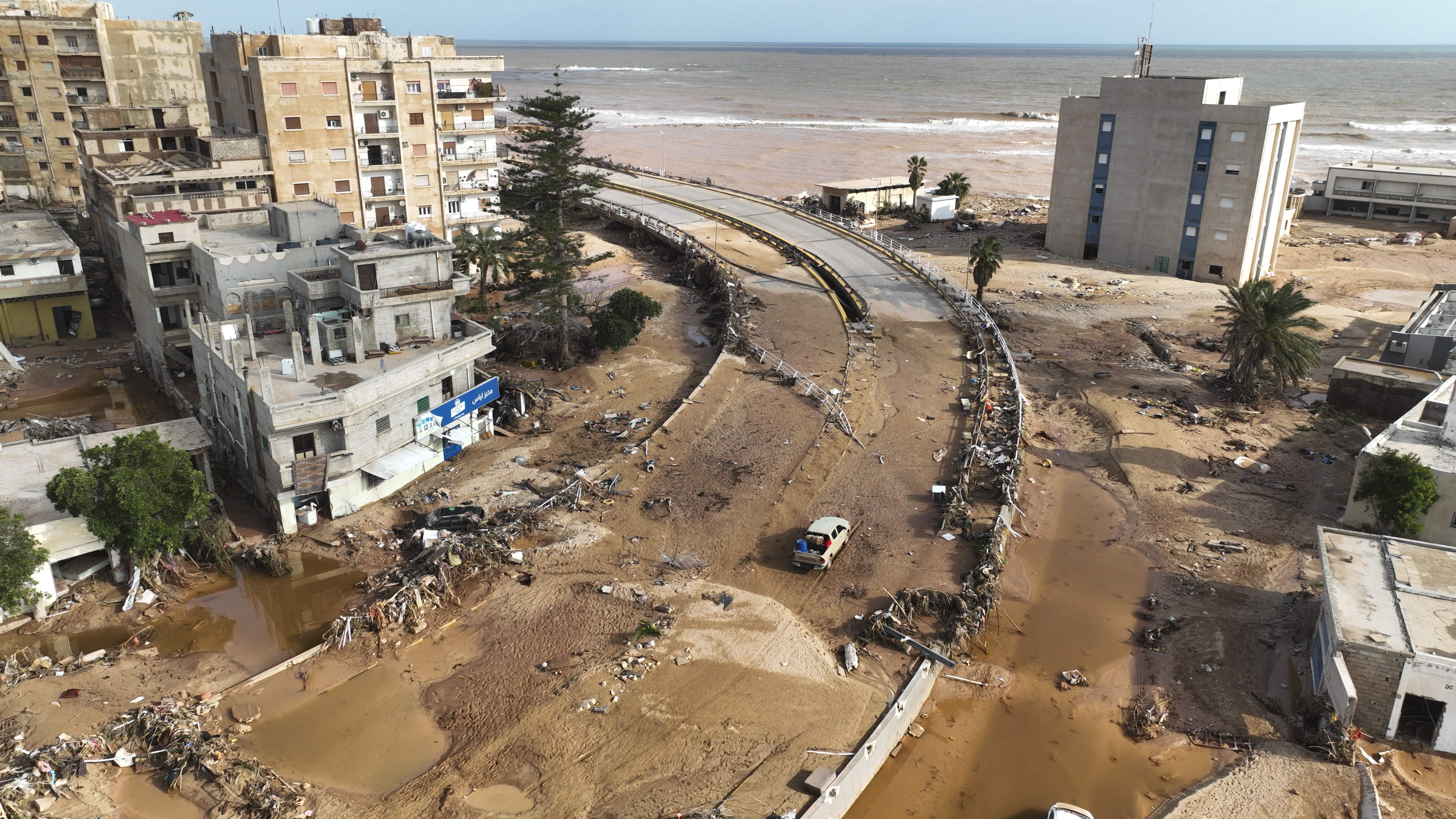
A view of the city of Derna, Libya, September 12, 2023. /AP
A view of the city of Derna, Libya, September 12, 2023. /AP
Warmer oceans
Storm Daniel formed around September 4, bringing death and destruction to Bulgaria, Greece and Turkey last week.
These Mediterranean storms which bear the features of tropical cyclones and hurricanes, known as "medicanes," only occur one to three times a year.
Some scientists believed warmer oceans contribute to the intensive rainfall brought by the storms.
The storms need fluxes of heat and moisture, which are "enhanced by warm sea surface temperatures," AFP cited Suzanne Gray, a professor in the Meteorology Department at the University of Reading in Britain, as saying.
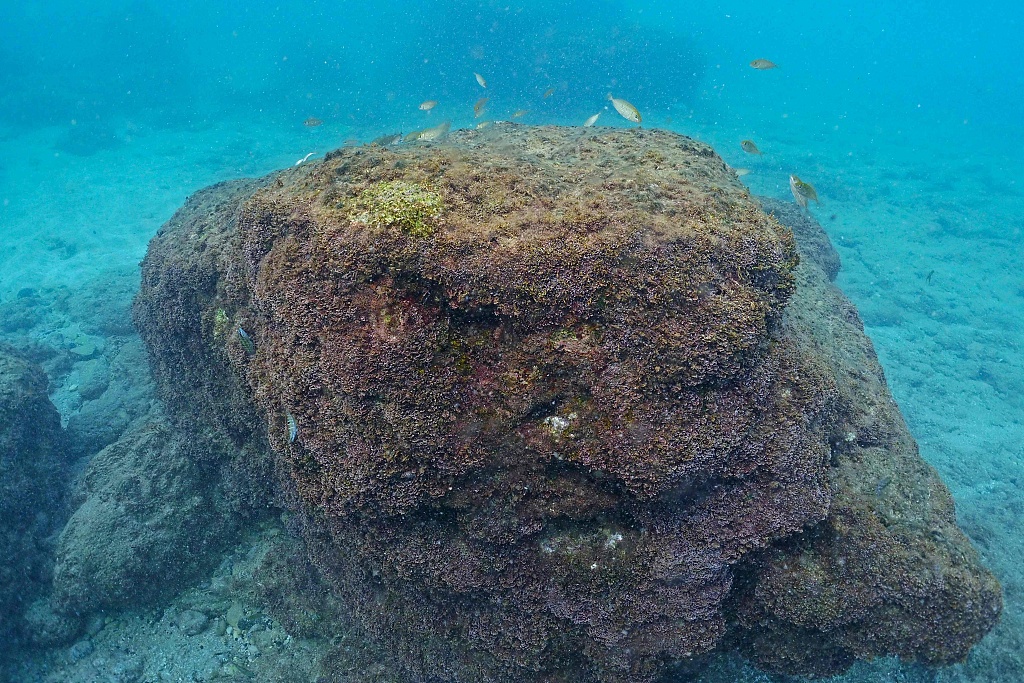
Fish swim in the Mediterranean Sea amid increasing water temperatures and a decline in seaweed off the coast of Batroun city, Lebanon, August 1, 2023. /CFP
Fish swim in the Mediterranean Sea amid increasing water temperatures and a decline in seaweed off the coast of Batroun city, Lebanon, August 1, 2023. /CFP
The surface waters of the eastern Mediterranean and Atlantic are two to three degrees Celsius warmer than usual and are "likely to have caused rainfall to be more intense," said scientists taking part in a UK National Climate Impacts meeting.
But it is unclear if the persistent high-pressure blocking pattern that caused the heavy rainfall and flooding will become more common in the future, they said.
The last assessment report by the UN's scientific advisory panel on climate change, released earlier this year, concluded that a warming world increases the strength of "medicanes" even if they become less frequent, added Gray.
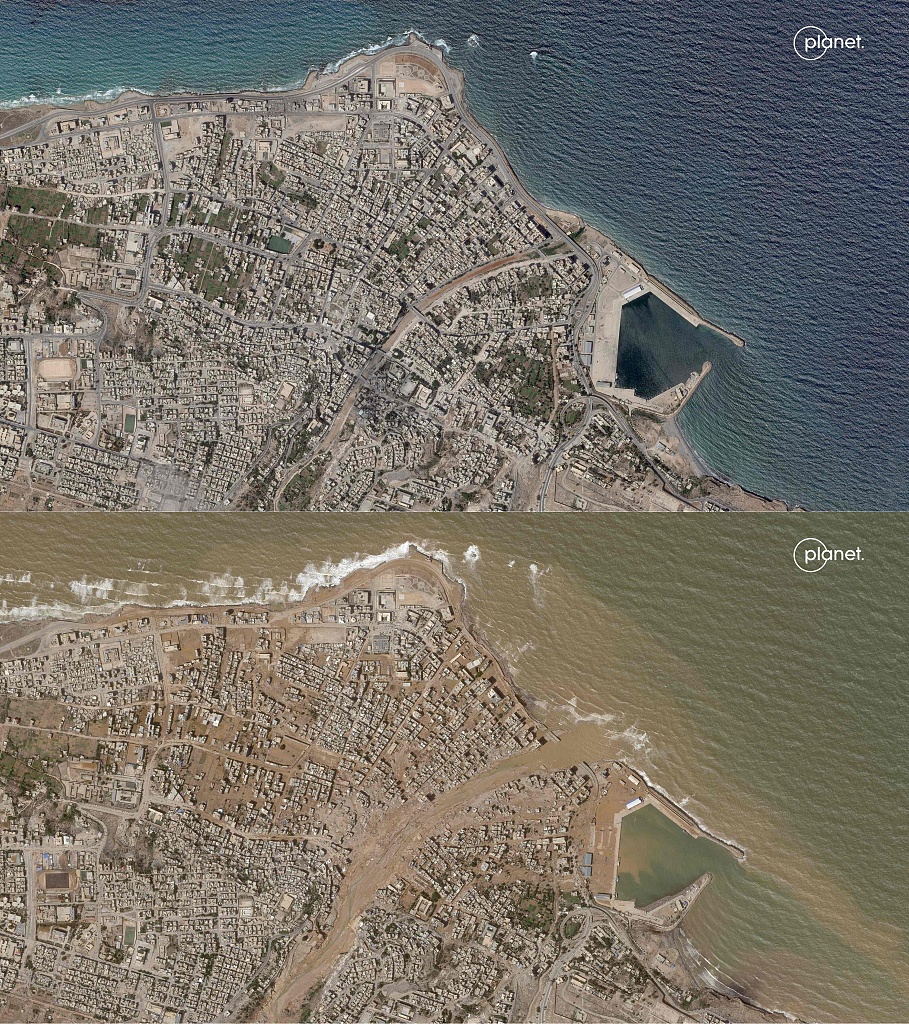
This combination of handout satellite images released by Planet Labs PBC shows an aerial view of the city of Derna before flash floods (upper), September 2, 2023, and after flash flooding (lower), September 12, 2023. /AFP
This combination of handout satellite images released by Planet Labs PBC shows an aerial view of the city of Derna before flash floods (upper), September 2, 2023, and after flash flooding (lower), September 12, 2023. /AFP
Most scientists are cautious about making direct links between individual weather events and long-term changes in the climate.
But Storm Daniel "is illustrative of the type of devastating flooding event we may expect increasingly in the future" as the world heats up, Lizzie Kendon, a climate science professor at the University of Bristol, told AFP.
According to the European Union's climate monitoring service Copernicus, the rising global sea surface temperatures were driving record levels of heat across the globe, with 2023 likely to be the warmest year in human history.
Oceans have absorbed 90 percent of the excess heat produced by human activity since the dawn of the industrial age, according to scientists.
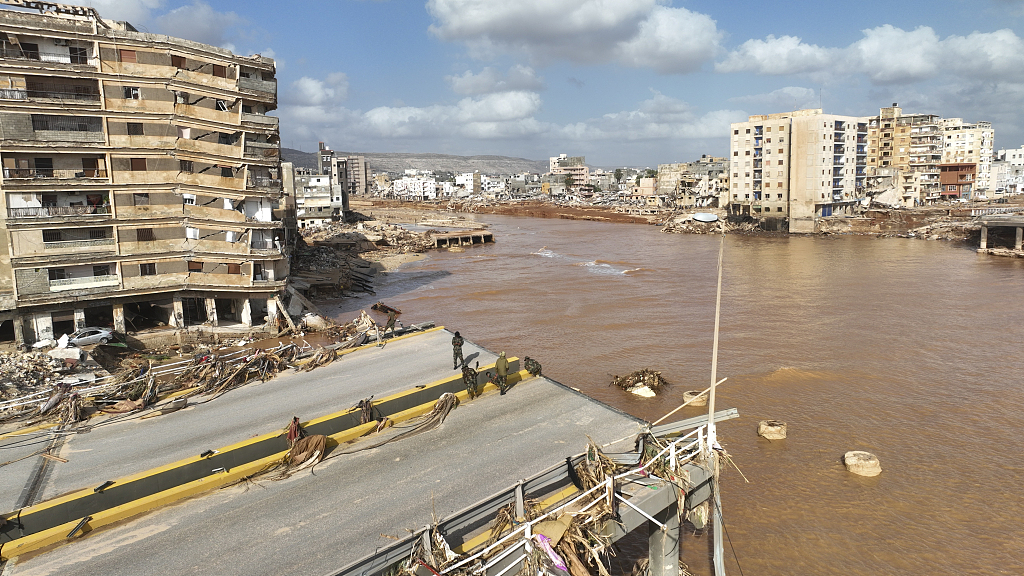
Floods in Derna, Libya, September 12, 2023. /CFP
Floods in Derna, Libya, September 12, 2023. /CFP
Low-lying lands and political chaos
The eastern city of Derna appears to be the most severely affected by the floods. Photos and videos showed homes and fields submerged. The city is located at the end of a valley known as the Wadi Derna. Wadis are types of valleys that are dry except during the rainy season. Torrents of water tore through the dams, sweeping entire buildings into the sea.
The port city is low-lying, making it more susceptible to flooding. The soil, dry and cracked after a long, hot summer, is not equipped to absorb such large amounts of water.
Some analysts also believe the fragmented political scene in Libya contributed to the devastation.
Since 2014, Libya has been split between two rival governments, the eastern-based government led by Osama Hammad, and the Tripoli-based Government of National Unity led by Abdul-Hamed Dbeibah.
Claudia Gazzini, a senior Libya analyst at International Crisis Group, said the problem is partially logistical with many of the roads entering the port city having been severed by the storm, China Media Group (CMG) reported.
"International efforts to send rescue teams have to go through the Tripoli-based government," said Gazzini. That means permission to allow aid inside the most affected areas has to be approved by rival authorities.
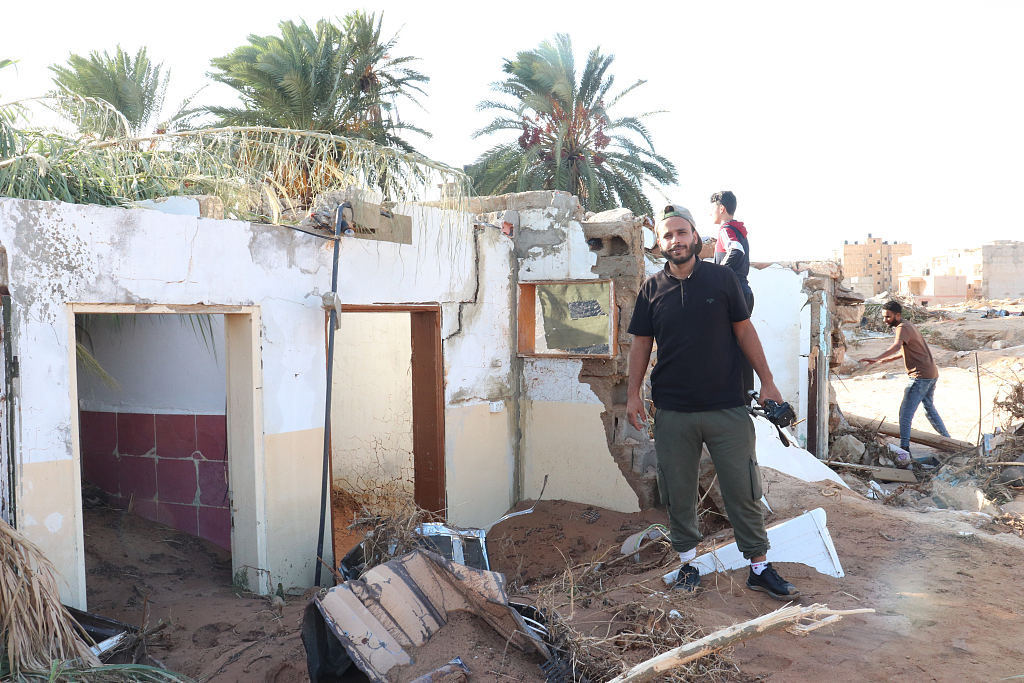
A view of devastation in disaster zones after the floods caused by storm Daniel ravaged the region in Derna, Libya, September 12, 2023. /CFP
A view of devastation in disaster zones after the floods caused by storm Daniel ravaged the region in Derna, Libya, September 12, 2023. /CFP
The political conditions in Libya "pose challenges for developing risk communication and hazard assessment strategies, coordinating rescue operations, and also potentially for maintenance of critical infrastructure such as dams," said Leslie Mabon, a lecturer in environmental systems at the UK-based Open University told AFP.
Weak infrastructure and poor pre-warning system
Weaknesses in the planning and design standards for infrastructure were exposed during the flood.
Two rivers flow into Derna, which is supposed to be protected by two dams. Both collapsed as water overwhelmed them.
According to local media, two dams were constructed in the 1970s to prevent flooding. The core was made of clay and the sides were made of stones and rocks.
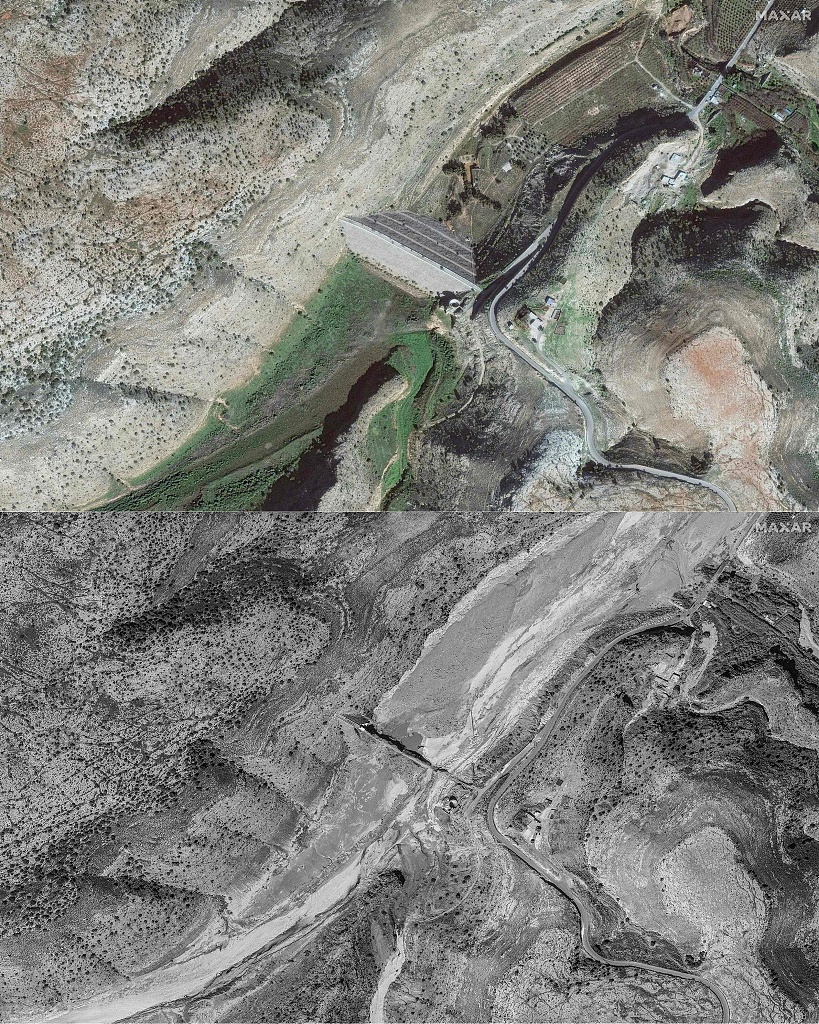
This combination of satellite pictures created and released by Maxar Technologies shows upper dam on Wadi Derna river before floods (upper), January 7, 2022, after floods (lower), September 13, 2023. /AFP
This combination of satellite pictures created and released by Maxar Technologies shows upper dam on Wadi Derna river before floods (upper), January 7, 2022, after floods (lower), September 13, 2023. /AFP
"You just had a sort of routine neglect of all infrastructure in Libya," Stephanie T. Williams, who served as special adviser on Libya to the UN secretary general from 2021 to 2022, told The Washington Post. Dams, desalination plants, electrical grids and roads have been left in disrepair throughout the country.
The loss of life was also a consequence of the limited nature of Libya's forecasting, warning and evacuation systems.
Libya is currently the only country yet to develop a climate strategy, according to the United Nations.
"Typically, you have a robust early-warning system in place to be able to warn citizens to evacuate or take cover," Williams said. "We didn't have that in this situation."
(With input from agencies)
(Cover: A damaged vehicle is stuck in debris after the floods caused by storm Daniel ravaged areas in Derna, Libya, September 12, 2023. /CFP)